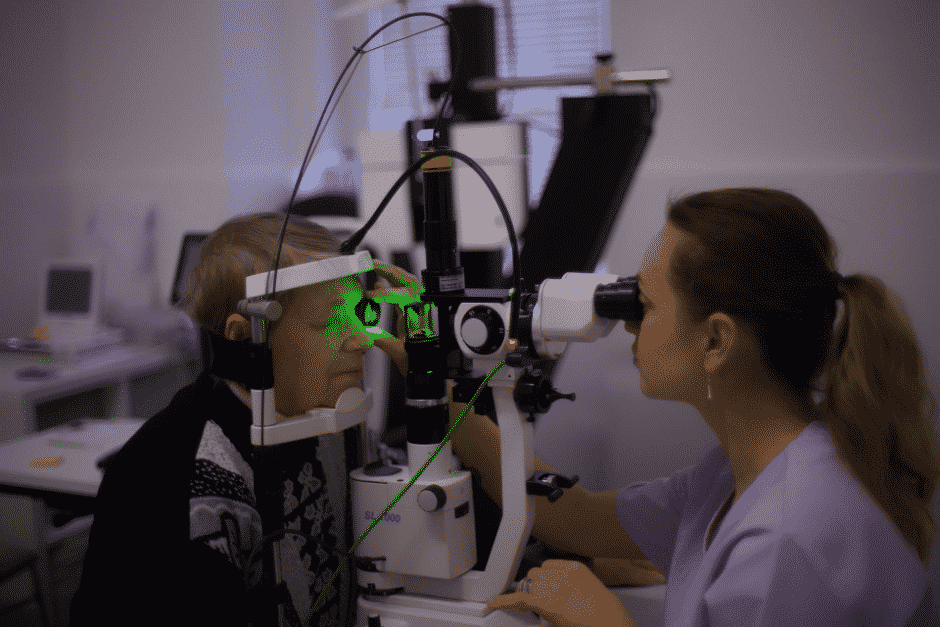Cataract Surgery Cost – Overview
Cataract surgery is a commonly performed eye surgery worldwide. However, it can be pretty expensive, especially if not covered under your insurance plan.
Without Medicare or private insurance to cover the cost, you may end up paying anywhere between US$ 3,000 and US$ 6,000 for each eye.
Medicare and most private insurance plans generally cover the cost of basic cataract surgery with a standard mono-focal lens. Costs not covered may include upgrades to premium intraocular lenses and certain out-of-pocket expenses like deductibles and copayments.
However, you still need to pay other expenses, such as medication costs, copayments, and your annual deductible.
The cost of cataract surgery can vary based on the choice of intraocular lens (IOL), the surgical method (traditional vs. laser-assisted), and whether any complications or additional procedures are necessary rather than “additional underlying tissues.
It is highly recommended that you talk to your eye surgeon before scheduling the surgery to learn about the specific out-of-pocket expenses for cataract surgery.
Next, it is essential to speak with your Medicare or insurance representative and confirm the particular costs the insurance plan will cover.
This article breaks down cataract surgery costs relating to specific lenses used, the surgical technique, and any pre-existing eye condition.
What is Cataract Surgery?
Cataract surgery is an eye surgery performed by an ophthalmologist to remove a cloudy, damaged eye lens. Usually, healthy lenses are clear, whereas damaged eye lenses tend to turn cloudy.
The damaged eye lens is removed and replaced with a clear artificial lens during the surgery.
Cataracts are caused mainly by the aging of the crystalline lens. Gradually, a yellow-brown pigment within the lens is collected.
On top of this, there are changes in the lens fiber structure due to aging. This causes less light to enter the lens, ultimately developing a cataract.
What is the Average Cost of Cataract Surgery?

Cataract surgery is covered by Medicare and private insurance providers except for specific costs relating to the surgeon, the lens and surgical technique.
Apart from this, you will also pay certain out-of-pocket costs, such as deductibles, copayments, and medication costs.
Without health insurance coverage, the cost of cataract surgery for both eyes can be as high as US$ 6,000 to US$ 12,000 in the US.
Most ophthalmologists offer payment plans if you have significant out-of-pocket expenses.
For this, you can use your health savings account (HSA). Besides this, credit cards also offer reductions for certain medical costs.
It is advisable to reach out to your insurance representative to check your eligibility for this.
In short, conventional cataract surgery may cost around US$3,000 to US$5,000 per eye.
Conversely, laser-assisted cataract surgeries with advanced lens implants can cost between US$4,000 and US$6,000 per eye.
This cost includes the charges for implantation, surgery, consumable medical equipment, and technical fees.
What are the different types of Cataract Surgeries?
There are four main techniques used to perform a successful cataract eye surgery.
#1. Phacoemulsification Cataract Surgery – It is the most commonly used cataract surgery technique worldwide.
This is combined with a conventional cataract surgical procedure and is covered by Medicare and private health insurance carriers.
In cataract eye surgery, an incision is made in the eye, and a tiny ultrasound device is placed within it. This emits focused sound waves to disintegrate the damaged, cloudy eye lens into small pieces.
The bits of the lens are then carefully removed from the eye using gentle suction. Next, an artificial lens is implanted into the capsule to replace the damaged, cloudy lens.
#2. Extracapsular Cataract Surgery – Another form of cataract surgery is extracapsular cataract extraction. This is less commonly used and requires the surgeon to make a larger incision in the eye to remove the damaged lens without breaking it.
After removing the damaged lens, the surgeon will carefully implant the new lens. Finally, the incision is closed using stitches or sutures.
#3. Intracapsular Cataract Extraction – This cataract extraction involves removing the damaged lens and capsule using a large incision in the eyeball. This is a rarely performed eye surgery and may result in several complications.
#4. Laser-Assisted Cataract Eye Surgery – Last but not least is laser-assisted cataract eye surgery. It requires using optical coherence tomography.
Laser-assisted cataract surgery may be covered by Medicare and some insurance providers when deemed medically necessary. However, additional costs for using laser technology over traditional methods may not be covered. The reason is that this technique is new to the market and not many ophthalmologists are trained in it yet.
This technique involves making precise incisions in the capsule and cornea using a thin laser beam. The laser softens the cataract and disintegrates it into smaller pieces.
These pieces are then removed before being replaced with an artificial lens.
Conclusion
Cataract eye surgery is essential to restore vision in the affected eye.
This procedure has fewer risks, side effects, and complications. However, you must consult your surgeon to determine which cataract surgery technique is best suited for your case.
Ask your Medicare or private insurance representative about cataract surgery coverage before deciding to undergo surgery.
See Also
LASIK Eye Surgery Cost in Colorado
Does Medicaid Cover Cataract Surgery?
Optometrist vs Ophthalmologist